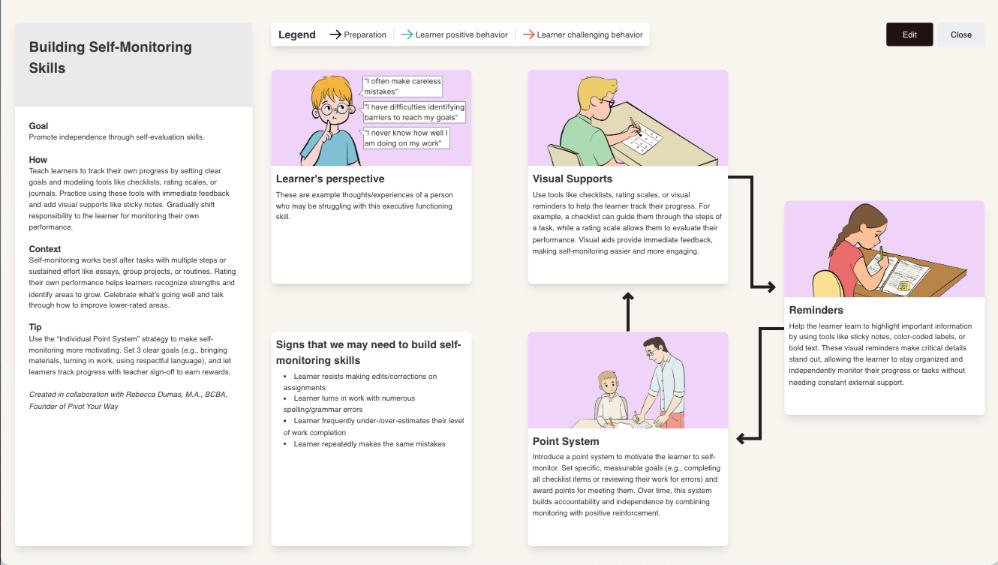
Building Self-Monitoring Skill
Self-Evaluation Tools That Boost Independence and Executive Function
Teaching learners to set goals, rate their own performance, and chart progress turns essays, group projects, and daily routines into built-in opportunities for reflection and self-regulation—cornerstone elements of executive functioning. Using checklists, rating scales, and quick journal prompts, BCBAs, special-education teachers, and parents help students (especially those with ADHD, who often need extra structure) track multi-step tasks, recognize strengths, and target growth areas—skills tied to higher classroom achievement and workplace readiness.
Why use self-monitoring strategies?
- Stronger academic outcomes. Studies show students who self-monitor accuracy and effort boost assignment completion and quality by 20 – 40 %, with particularly notable gains for learners managing ADHD-related distractions.
- Enhanced executive-function skill set. Regularly tracking one’s own behavior strengthens working memory, planning, and inhibitory control—core predictors of long-term success in both academics and daily life.
- Greater motivation and ownership. Seeing real-time progress fuels intrinsic drive and reduces reliance on adult prompts during sustained or complex tasks, promoting true independence.
What you’ll unlock inside BIP Visualized:
- A step-by-step overview of how to use this evidence-based strategy
- A quick Self-Assessment learners can complete to see whether impulse-control support is right for them.
- Ability to customize images and descriptions to individualize for your learner
- Aligning, printable visual resources to support teaching and generalization
- Ability to add this visual strategy and more to build a custom-made visual BIP tailored to your learner’s needs
Start your free trial to access the Building Self-Monitoring Skills strategy and create a personalized, team-friendly visual Behavior Intervention Plan today.
